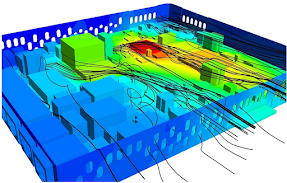Need For Thermal Consultants and the Vital Steps of Thermal Analysis!
Thermal analysis is an important branch of engineering that deals with studying and understanding the effects of temperature on materials and systems. It involves the measurement, interpretation, and prediction of the behavior of materials subjected to thermal forces. Thermal analysis can be used to determine the thermal properties of materials, how they respond to certain effects, as well as basic properties such as heat capacity, thermal conductivity, expansion coefficient, and others.
Why do you need Thermal Analysis consultants?
Thermal analysis consultant
is professionals who specialize in analyzing and predicting the effects
of heat flowin materials and systems. These consultants are experts in
understanding the thermodynamics of a material or system and predicting
its behavior in a given set of conditions. They are also trained to
analyze complex systems using sophisticated analytical tools such as
finite element analysis.
What are the key steps of Thermal Analysis/Thermal Modeling?
Basic Parameters
This is the first step in thermal analysis, where you need to identify
key thermodynamic parameters such as temperature, pressure, density,
enthalpy, etc., which are necessary for predicting the behavior of a
material or system under specific temperature conditions.
Domain Sizing and Boundary Conditions
In this step, the thermal consultant
needs to define the size of the domain or system under consideration
along with all other boundary conditions necessary for carrying out
thermal analysis. This includes defining properties such as heat
transfer coefficients, convective coefficients, surface absorptivity,
etc.
Model Details
This step involves
defining the type of model that needs to be used for carrying out
thermal analysis. Different models can be used depending on the
complexity of the problem at hand. Popular models include the finite
element method, finite difference method, analytical solution methods,
etc.
Thermal Properties
In this step,
you need to define all the relevant thermal properties, such as thermal
conductivity, specific heat capacity, density, etc., for all materials
that are part of the system. These properties will be necessary for
predicting how heat will be transferred within the system and how its
components will respond to different temperature conditions.
About Thermal Designs Solutions:
Thermal Design Solutions offers invaluable services, i.e., thermal design consultant
when it comes to cooling electronics components with reliable and
effective solutions. By taking advantage of their expertise from
chip-level thermal design to large system analysis, they can develop
solutions that optimize performance while minimizing total thermal
resistance.
For more details, visit https://www.thermalds.com/




Comments
Post a Comment